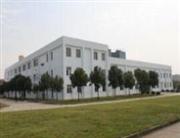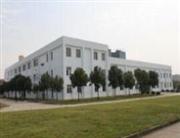1/1
1,2,4-Benzenetricarboxylic anhydride 552-30-7 in stock factory Trimellitic anhydride
- Min. Order1KG
- Purity99%
- Cas No552-30-7
- Supply Abilitymetric tons per month
- Update time2020-06-02
Since:2004-09-01
Address:BLDG 9,No.235 Sanlin road,Pudong new district,Shanghai,China
| Product Name | 1,2,4-Benzenetricarboxylic anhydride 552-30-7 in stock factory Trimellitic anhydride |
| CAS No | 552-30-7 |
| EC-No | |
| Min. Order | 1KG |
| Purity | 99% |
| Supply Ability | metric tons per month |
| Release date | 2020/06/02 |
1,2,4-Benzenetricarboxylic anhydride 552-30-7 in stock factory
Trimellitic anhydride
Trimellitic Anhydride is a low-molecular-weight chemical known to cause occupational asthma. It induces airway obstruction and eosinophilia after a latency period of sensitization.
Basic Info
Chemical Name trimellitic anhydride
Synonyms
1,2,4-Benzenetricarboxylic anhydride; Anhydrosepedonin; 1,3-dihydro-1,3-dioxo-5-isobenzofurancarboxylic acid; 1,3-dioxo-1,3-dihydro-isobenzofuran-5-carboxylic acid; 5-Isobenzofurancarboxylic acid, 1,3-dihydro-1,3-dioxo-; Expand
CAS No. 552-30-7
Molecular Formula C9H4O5
Molecular Weight 192.12500
PSA 80.67000
LogP 0.69540
Properties
Appearance & Physical State white to off-white flakes
Density 1.54
Boiling Point 390ºC
Melting Point 164-169ºC
Flash Point 227ºC
Refractive Index 1.662
Water Solubility DECOMPOSES
Stability Stable. Moisture sensitive.
Storage Condition Store in a cool, dry place. Store in a tightly closed container.
Vapor Density 6.6 (vs air)
Vapor Pressure <0.01 mm Hg ( 20 °C)
Safety Info
RTECS DC2050000
Safety Statements S22-S26-S36/37/39
HS Code 29173980
WGK Germany 1
Risk Statements R37; R41; R42/43
Hazard Codes Xn
Symbol GHS05, GHS07, GHS08
Hazard Declaration H317; H318; H334; H335
Signal Word Danger
Caution Statement P261; P280; P305 + P351 + P338; P342 + P311
Synthesis Route
Total 10 Documents >>
Section 1 - Chemical Product MSDS Name:1 2 4-Benzenetricarboxylic anhydride 97% Material Safety Data Sheet
Synonym:Trimellitic anhydride; Androtrimellitic Acid; 1,3-Dihydro-1,3-dioxo-5-isobenzofurancarboxylic acid; TMA; TMA
Section 2 - COMPOSITION, INFORMATION ON INGREDIENTS
| CAS# | Chemical Name | content | EINECS# |
| 552-30-7 | 1,2,4-BENZENETRICARBOXYLIC ANHYDRIDE | 100.0 | 209-008-0 |
Hazard Symbols: XN XI
Risk Phrases: 36/37/38 42
| Name: | 1 2 4-Benzenetricarboxylic anhydride 97% Material Safety Data Sheet |
| Synonym: | Trimellitic anhydride; Androtrimellitic Acid; 1,3-Dihydro-1,3-dioxo-5-isobenzofurancarboxylic acid; TMA; TMA |
| CAS: | 552-30-7 |
Hazard identification
2.1 Classification of the substance or mixture
Serious eye damage, Category 1
Skin sensitization, Category 1
Specific target organ toxicity – single exposure, Category 3
Respiratory sensitization, Category 1
2.2 GHS label elements, including precautionary statements
Pictogram(s)
Signal word
Danger
Hazard statement(s)
H318 Causes serious eye damage
H317 May cause an allergic skin reaction
H335 May cause respiratory irritation
H334 May cause allergy or asthma symptoms or breathing difficulties if inhaled
Precautionary statement(s)
Prevention
P280 Wear protective gloves/protective clothing/eye protection/face protection.
P261 Avoid breathing dust/fume/gas/mist/vapours/spray.
P272 Contaminated work clothing should not be allowed out of the workplace.
P271 Use only outdoors or in a well-ventilated area.
P284 [In case of inadequate ventilation] wear respiratory protection.
Response
P305+P351+P338 IF IN EYES: Rinse cautiously with water for several minutes. Remove contact lenses, if present and easy to do. Continue rinsing.
P310 Immediately call a POISON CENTER/doctor/…
P302+P352 IF ON SKIN: Wash with plenty of water/...
P333+P313 If skin irritation or rash occurs: Get medical advice/attention.
P321 Specific treatment (see ... on this label).
P362+P364 Take off contaminated clothing and wash it before reuse.
P304+P340 IF INHALED: Remove person to fresh air and keep comfortable for breathing.
P312 Call a POISON CENTER/doctor/…if you feel unwell.
P342+P311 If experiencing respiratory symptoms: Call a POISON CENTER/doctor/...
Storage
P403+P233 Store in a well-ventilated place. Keep container tightly closed.
P405 Store locked up.
Disposal
P501 Dispose of contents/container to ...
2.3 Other hazards which do not result in classification
none
3.Composition/information on ingredients
3.1 Substances
Chemical name Common names and synonyms CAS number EC number Concentration
trimellitic anhydride trimellitic anhydride 552-30-7 none 100%
4.First-aid measures
4.1 Description of necessary first-aid measures
General advice
Consult a physician. Show this safety data sheet to the doctor in attendance.
If inhaled
Fresh air, rest. Refer for medical attention.
In case of skin contact
Remove contaminated clothes. Rinse skin with plenty of water or shower.
In case of eye contact
First rinse with plenty of water for several minutes (remove contact lenses if easily possible), then refer for medical attention.
If swallowed
Rinse mouth. Give one or two glasses of water to drink. Refer for medical attention .
4.2 Most important symptoms/effects, acute and delayed
Exposure Routes: inhalation, ingestion, skin and/or eye contact Symptoms: Irritation eyes, skin, nose, respiratory system; pulmonary edema, respiratory sensitization; rhinitis, asthma, cough, wheezing, dyspnea (breathing difficulty), malaise (vague feeling of discomfort), fever, muscle aches, sneezing Target Organs: Eyes, skin, respiratory system (NIOSH, 2016)
4.3 Indication of immediate medical attention and special treatment needed, if necessary
/SRP:/ Basic treatment: Establish a patent airway (oropharyngeal or nasopharyngeal airway, if needed). Suction if necessary. Watch for signs of respiratory insufficiency and assist ventilations if needed. Administer oxygen by nonrebreather mask at 10 to 15 L/min. Monitor for pulmonary edema and treat if necessary ... . Monitor for shock and treat if necessary ... . Anticipate seizures and treat if necessary ... . For eye contamination, flush eyes immediately with water. Irrigate each eye continuously with 0.9% saline (NS) during transport ... . Do not use emetics. For ingestion, rinse mouth and administer 5 ml/kg up to 200 ml of water for dilution if the patient can swallow, has a strong gag reflex, and does not drool ... . Cover skin burns with dry sterile dressings after decontamination ... . /Poisons A and B/
5.Fire-fighting measures
5.1 Extinguishing media
Suitable extinguishing media
Water spray, powder.
5.2 Specific hazards arising from the chemical
This chemical is combustible.
5.3 Special protective actions for fire-fighters
Wear self-contained breathing apparatus for firefighting if necessary.
6.Accidental release measures
6.1 Personal precautions, protective equipment and emergency procedures
Use personal protective equipment. Avoid dust formation. Avoid breathing vapours, mist or gas. Ensure adequate ventilation. Evacuate personnel to safe areas. Avoid breathing dust. For personal protection see section 8.
6.2 Environmental precautions
Personal protection: particulate filter respirator adapted to the airborne concentration of the substance. Sweep spilled substance into covered containers. If appropriate, moisten first to prevent dusting. Carefully collect remainder.
6.3 Methods and materials for containment and cleaning up
Personal protection: P3 filter respirator for toxic particles. Sweep spilled substance into containers; if appropriate, moisten first to prevent dusting. Carefully collect remainder.
7.Handling and storage
7.1 Precautions for safe handling
Avoid contact with skin and eyes. Avoid formation of dust and aerosols. Avoid exposure - obtain special instructions before use.Provide appropriate exhaust ventilation at places where dust is formed. For precautions see section 2.2.
7.2 Conditions for safe storage, including any incompatibilities
Dry. Separated from bases and strong oxidants. Ventilation along the floor.Dry. Separated from bases and strong oxidants. Ventilation along the floor.
8.Exposure controls/personal protection
8.1 Control parameters
Occupational Exposure limit values
Recommended Exposure Limit: 10 Hr Time-Weighted Avg: 0.005 ppm (0.04 mg/cu m). Should be handled in the workplace as an extremely toxic substance.
Biological limit values
no data available
8.2 Appropriate engineering controls
Handle in accordance with good industrial hygiene and safety practice. Wash hands before breaks and at the end of workday.
8.3 Individual protection measures, such as personal protective equipment (PPE)
Eye/face protection
Safety glasses with side-shields conforming to EN166. Use equipment for eye protection tested and approved under appropriate government standards such as NIOSH (US) or EN 166(EU).
Skin protection
Wear impervious clothing. The type of protective equipment must be selected according to the concentration and amount of the dangerous substance at the specific workplace. Handle with gloves. Gloves must be inspected prior to use. Use proper glove removal technique(without touching glove's outer surface) to avoid skin contact with this product. Dispose of contaminated gloves after use in accordance with applicable laws and good laboratory practices. Wash and dry hands. The selected protective gloves have to satisfy the specifications of EU Directive 89/686/EEC and the standard EN 374 derived from it.
Respiratory protection
Wear dust mask when handling large quantities.
Thermal hazards
no data available
9.Physical and chemical properties
Physical state white to off-white flakes
Colour Crystals
Odour no data available
Melting point/ freezing point 6°C(lit.)
Boiling point or initial boiling point and boiling range 88°C
Flammability Combustible SolidCombustible.
Lower and upper explosion limit / flammability limit no data available
Flash point 227°C
Auto-ignition temperature no data available
Decomposition temperature no data available
pH no data available
Kinematic viscosity no data available
Solubility In water:DECOMPOSES
Partition coefficient n-octanol/water (log value) no data available
Vapour pressure <0.01 mm Hg ( 20 °C)
Density and/or relative density 1.54
Relative vapour density 6.6 (vs air)
Particle characteristics no data available
10.Stability and reactivity
10.1 Reactivity
no data available
10.2 Chemical stability
Stable under recommended storage conditions.
10.3 Possibility of hazardous reactions
Combustible.Dust explosion possible if in powder or granular form, mixed with air. If dry, it can be charged electrostatically by swirling, pneumatic transport, pouring, etc.TRIMELLITIC ANHYDRIDE reacts exothermically with water. This reaction is expected to be slow, but can become vigorous if local heating accelerates it. Reaction with water is accelerated by acids. Incompatible with acids, strong oxidizing agents, alcohols, amines, and bases. Incompatible with strong oxidizing agents, strong acids or strong bases. .
10.4 Conditions to avoid
no data available
10.5 Incompatible materials
Reacts violently with bases and oxidants. Reacts slowly with water to form trimellitic acid.
10.6 Hazardous decomposition products
When heated to decomposition it emits acrid smoke and irritating fumes.
11.Toxicological information
Acute toxicity
Oral: LD50 Mouse oral 1900 mg/kg
Inhalation: LC50 Rat inhalation >2330 mg/cu m/4 hr
Dermal: no data available
Skin corrosion/irritation
no data available
Serious eye damage/irritation
no data available
Respiratory or skin sensitization
no data available
Germ cell mutagenicity
no data available
Carcinogenicity
no data available
Reproductive toxicity
no data available
STOT-single exposure
no data available
STOT-repeated exposure
no data available
Aspiration hazard
no data available
12.Ecological information
12.1 Toxicity
Toxicity to fish: no data available
Toxicity to daphnia and other aquatic invertebrates: no data available
Toxicity to algae: no data available
Toxicity to microorganisms: no data available
12.2 Persistence and degradability
AEROBIC: Based upon the hydrolysis of trimellitic anhydride in aqueous environments(1), biodegradation is not expected to be a primary removal process in aquatic systems(SRC). A biodegradation study based on BOD measurements, using an activated sludge seed, and an initial chemical concentration of 100 ppm, reported an 89-101% degree of biodegradation over a period of four weeks(2); however this was probably for trimellitic acid since the anhydride hydrolyzes so rapidly(SRC).
12.3 Bioaccumulative potential
Based on the structural similarities to phthalic anhydride, trimellitic anhydride is expected to have a similar hydrolysis rate(SRC). Phthalic anhydride has been reported to hydrolyze rapidly in water(1) and estimated half-lives of approximately 1.5 minutes and 2.7 minutes were calculated(SRC) using reported observed rate constants of 7.9X10-3/sec(2) and 4.3X10-3/sec(3), respectively. Based upon this hydrolysis rate, trimellitic anhydride bioconcentration is not expected to be an important environmental fate process(SRC).
12.4 Mobility in soil
Based on the structural similarities to phthalic anhydride, trimellitic anhydride is expected to have a similar hydrolysis rate(SRC). Phthalic anhydride has been reported to hydrolyze rapidly in water(1) and estimated half-lives of approximately 1.5 minutes and 2.7 minutes were calculated(SRC) using reported observed rate constants of 7.9X10-3/sec(2) and 4.3X10-3/sec(3), respectively. Based upon this hydrolysis rate, trimellitic anhydride adsorption to soil and leaching are not expected to be important processes(SRC).
12.5 Other adverse effects
no data available
13.Disposal considerations
13.1 Disposal methods
Product
The material can be disposed of by removal to a licensed chemical destruction plant or by controlled incineration with flue gas scrubbing. Do not contaminate water, foodstuffs, feed or seed by storage or disposal. Do not discharge to sewer systems.
Contaminated packaging
Containers can be triply rinsed (or equivalent) and offered for recycling or reconditioning. Alternatively, the packaging can be punctured to make it unusable for other purposes and then be disposed of in a sanitary landfill. Controlled incineration with flue gas scrubbing is possible for combustible packaging materials.
14.Transport information
14.1 UN Number
ADR/RID: Not dangerous goods. IMDG: Not dangerous goods. IATA: Not dangerous goods.
14.2 UN Proper Shipping Name
ADR/RID: unknown
IMDG: unknown
IATA: unknown
14.3 Transport hazard class(es)
ADR/RID: Not dangerous goods. IMDG: Not dangerous goods. IATA: Not dangerous goods.
14.4 Packing group, if applicable
ADR/RID: Not dangerous goods. IMDG: Not dangerous goods. IATA: Not dangerous goods.
14.5 Environmental hazards
ADR/RID: no IMDG: no IATA: no
14.6 Special precautions for user
no data available
14.7 Transport in bulk according to Annex II of MARPOL 73/78 and the IBC Code
no data available
15.Regulatory information
15.1 Safety, health and environmental regulations specific for the product in question
Chemical name Common names and synonyms CAS number EC number
trimellitic anhydride trimellitic anhydride 552-30-7 none
European Inventory of Existing Commercial Chemical Substances (EINECS) Listed.
EC Inventory Listed.
United States Toxic Substances Control Act (TSCA) Inventory Listed.
China Catalog of Hazardous chemicals 2015 Not Listed.
New Zealand Inventory of Chemicals (NZIoC) Listed.
Philippines Inventory of Chemicals and Chemical Substances (PICCS) Listed.
Vietnam National Chemical Inventory Listed.
Chinese Chemical Inventory of Existing Chemical Substances (China IECSC) Listed.
NMR Spectrum 1H NMR
Company Profile Introduction
Over 30 years experience in the chemical industry, Chemwill Asia Industrial co.,Ltd is one of the leading GMP complied manufacturer of Organic compounds in CHINA. Our main production base is located in Jiangsu province. We produce a wide range of organics including Active pharmaceutical ingredients(APIs), Veterinary, Indole derivatives, Aromatics, Fluorine, Boronic acids, organocatalysts, chiral building blocks, heterocyclic compounds. We are certified both to the ISO 9001 and ISO 14001 Standards, have a safety management system in place. Our advantageous business including: - Intermediate using for Pharmaceuticals - Active ingredient for Pharmaceutical and animal health (Human APIs and Veterinary APIs) - Fluorine, boronic acids, unnatural amino acids, cross linkers,chiral building blocks - Intermediate using for advanced performance materials - Monomer & polymers, high performance, photosensitive and specialty chemicals - Electro chemical materials(Lithium Battery, Photoresist, semiconductor, IT-related chemicals) * Custom synthesis from the laboratory scale to commercial production. * Contract research, custom manufacturing and contract-manufacture Ms Ella Lee - Deputy Sales Manager Phone: +86 -21-51086038 Email: chemwill_asia@126.com;chemwill@hotmail.com To learn more about our factory, PLS visit: www.chemwill.com


 China
China
